Kestrels at Matines
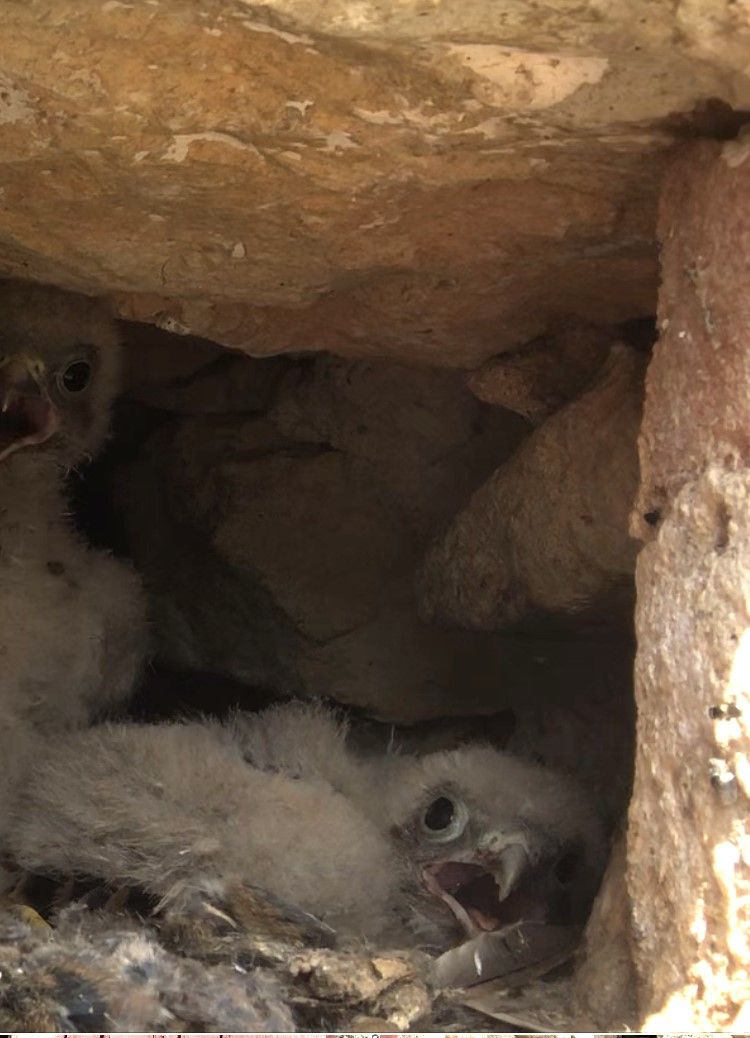
Kestrel chicks in the wall, June 10th 2022
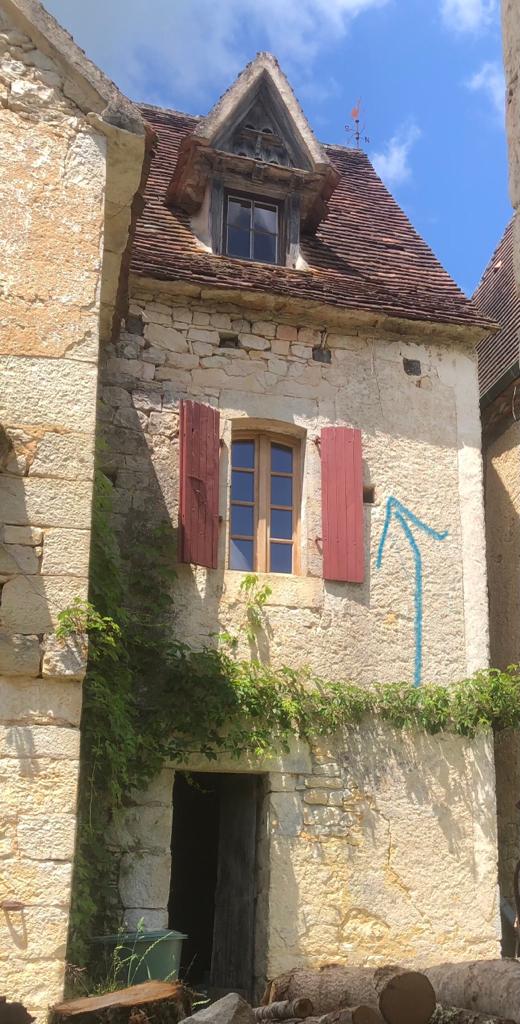
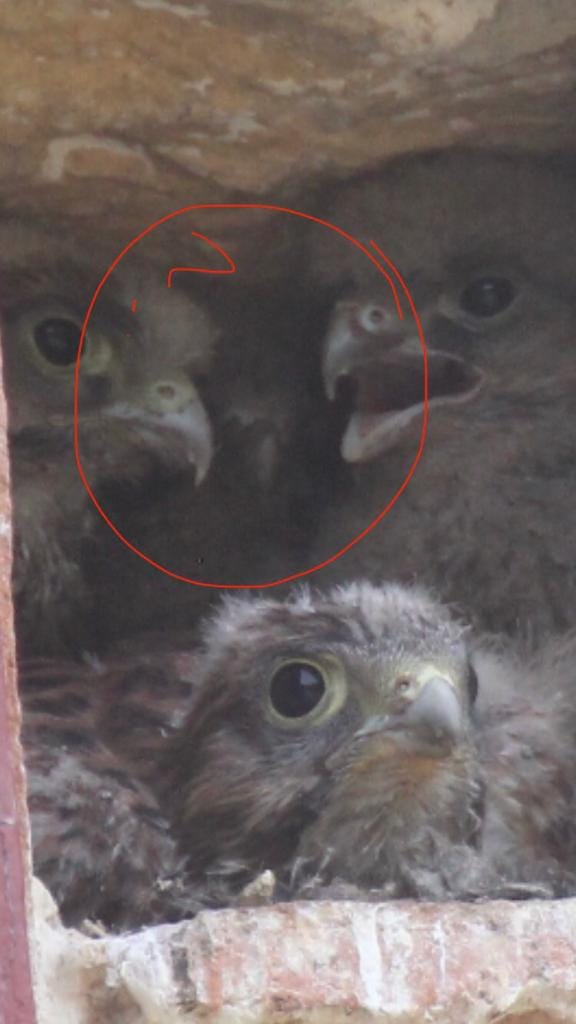
RSBP says: Although kestrels mature when they are a year old, many do not manage to secure a mate and a breeding territory until their second year.
Kestrels defend only a small territory immediately around the nest. The larger home range where the birds find most of their food is often partly shared with neighbouring pairs. The home range is at least 1 km square, but can be as large as 10 km square. Food availability and number of other kestrels in the area determine the size.
Kestrels are adaptable in their use of nest sites, but do not build their own nests. Old or disused nests of crows and other stick nesters are often used, as are ledges on cliffs and buildings. They are also regular hole-nesters and readily accept nest boxes. The same nest site is often used in successive years with some sites used for decades.
The timing of egg laying is dependent on the weather, but the female normally lays her clutch of 3-6 eggs in late April or early May. She is only able to produce eggs if she can get enough food. In years when vole numbers are low, many kestrels fail to nest at all.The female lays the eggs at two-day intervals, and usually starts to incubate as she lays the third egg. Incubation takes 27-29 days per egg, which hatch over a period of a few days. The chicks require constant brooding for the first 10-14 days, after which they are able to control their own body temperature.
The male provides the female and the chicks with food throughout the nesting period. The female will only hunt if food is short, risking the loss of eggs or young chicks. Only as the young get bigger, can she safely start to hunt close to the nest.
The chicks fledge gradually when they are around four weeks old. They explore increasing distances from the nest, but return to it to roost for another couple of weeks. Adults continue to feed the young for a month after fledging, during which time they will learn to catch their own food.
Unusually for birds of prey, there is no aggression between the chicks, which tend to fly, perch and roost together even for some time after fledging.
In the Autumn, kestrels readjust their territories to make best use of winter food supply. In good vole habitat kestrels tend to stay within their home ranges throughout the autumn and winter, while elsewhere many move to areas with a better winter food supply. The size of the winter territory is dependent on food supply and the number of other kestrels, but is at least 1 km square. Although it is defended, neighbouring territories sometimes overlap.
We have been lucky to be able to follow the kestrels and their family over the spring months. Linda and John have added some excellent telephoto shots, and one even taken through John's telescope.

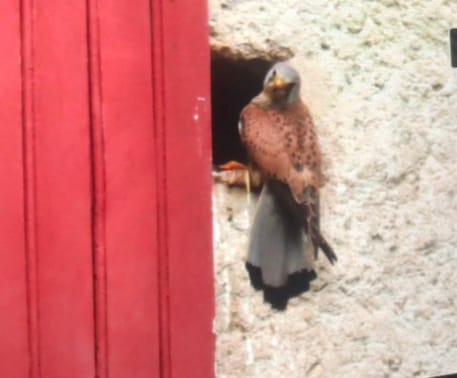
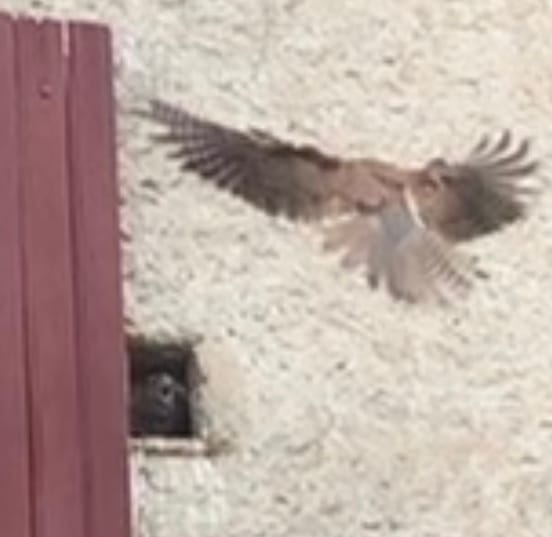
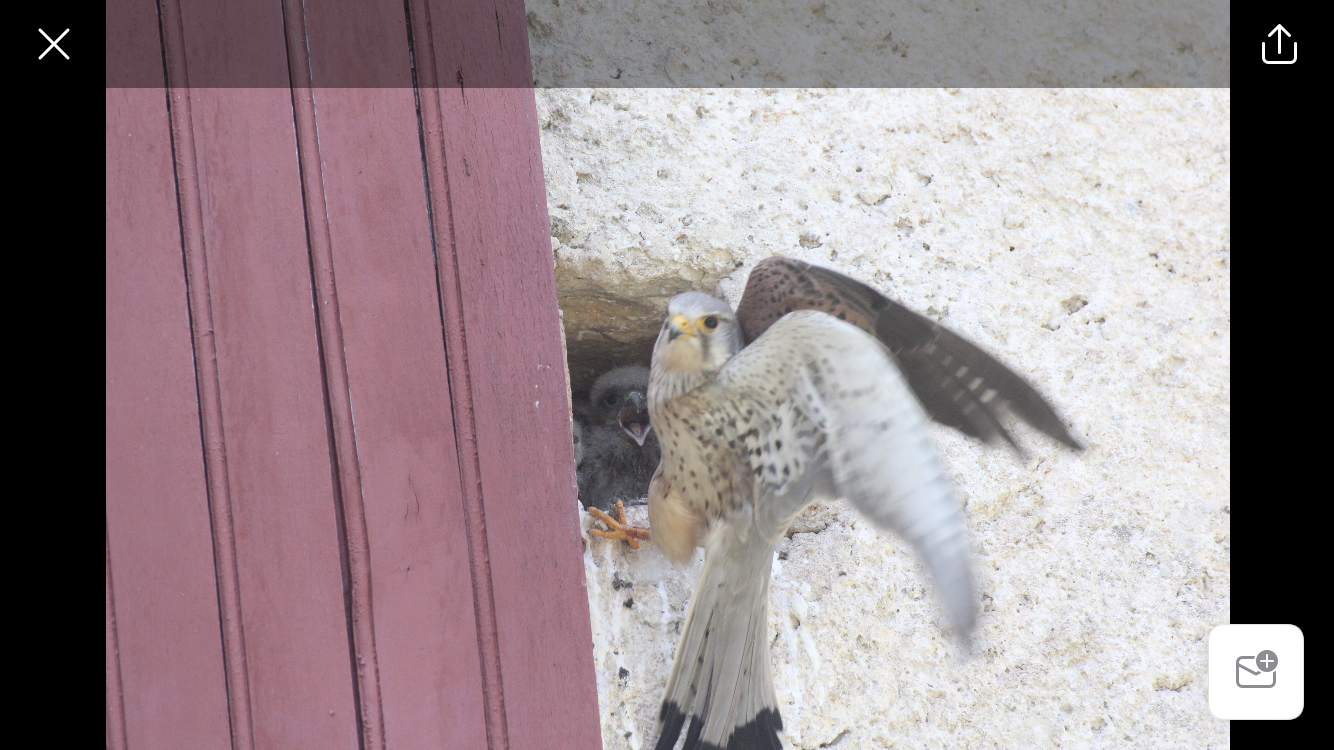
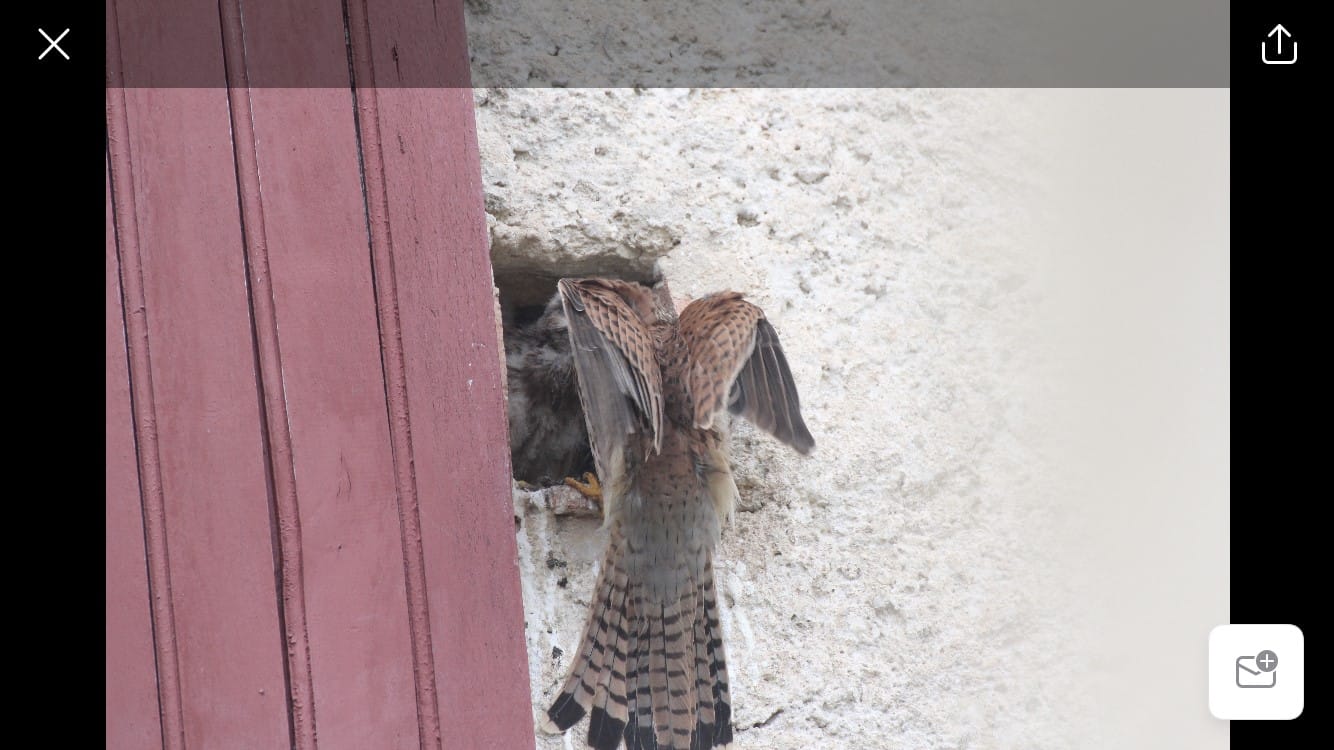
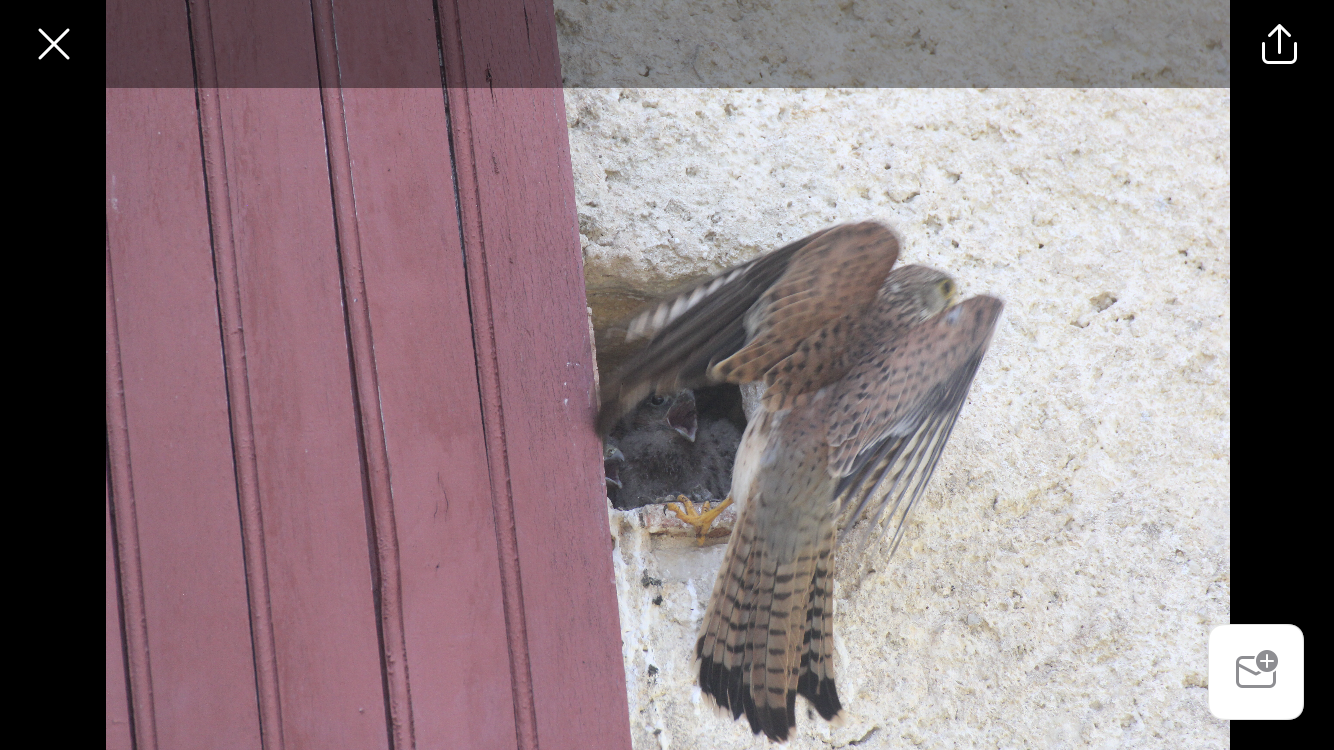
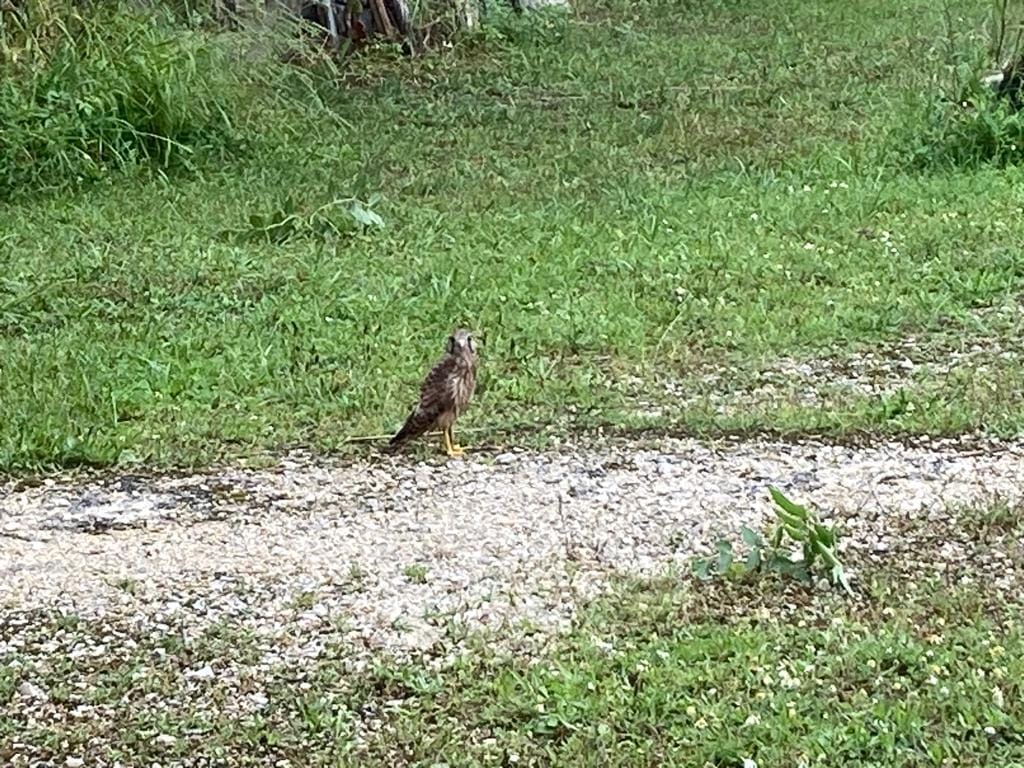
Parent dozing on our bathroom window ledge, and then feeding the chicks. We thought there were three, but maybe four? One poor chick unsure how to take off once fledged and on the ground. June 2023
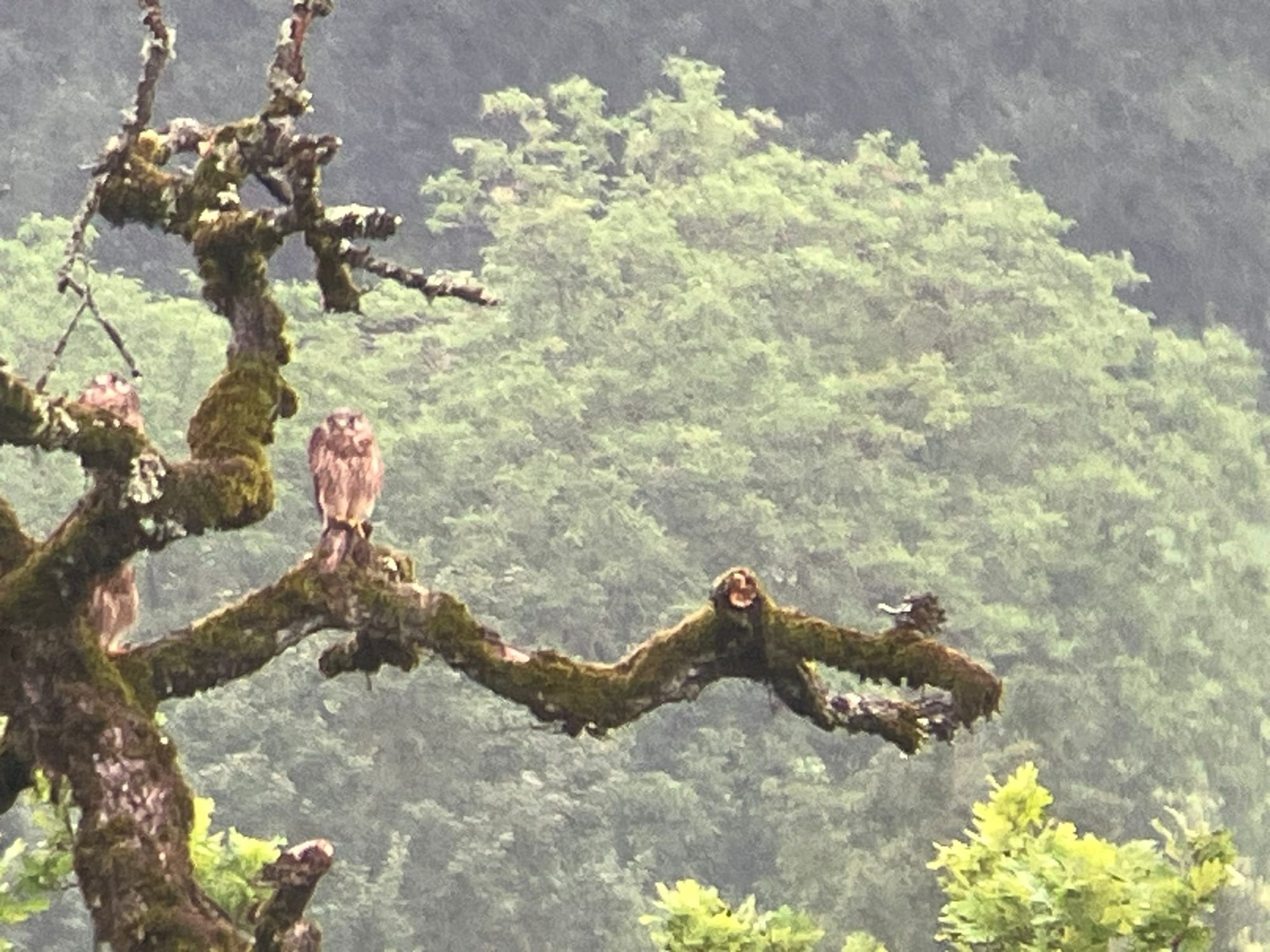
There has even been some spin-off artwork from the kestrels. We are not sure how many years they will nest in our wall, but we hope they will stay.
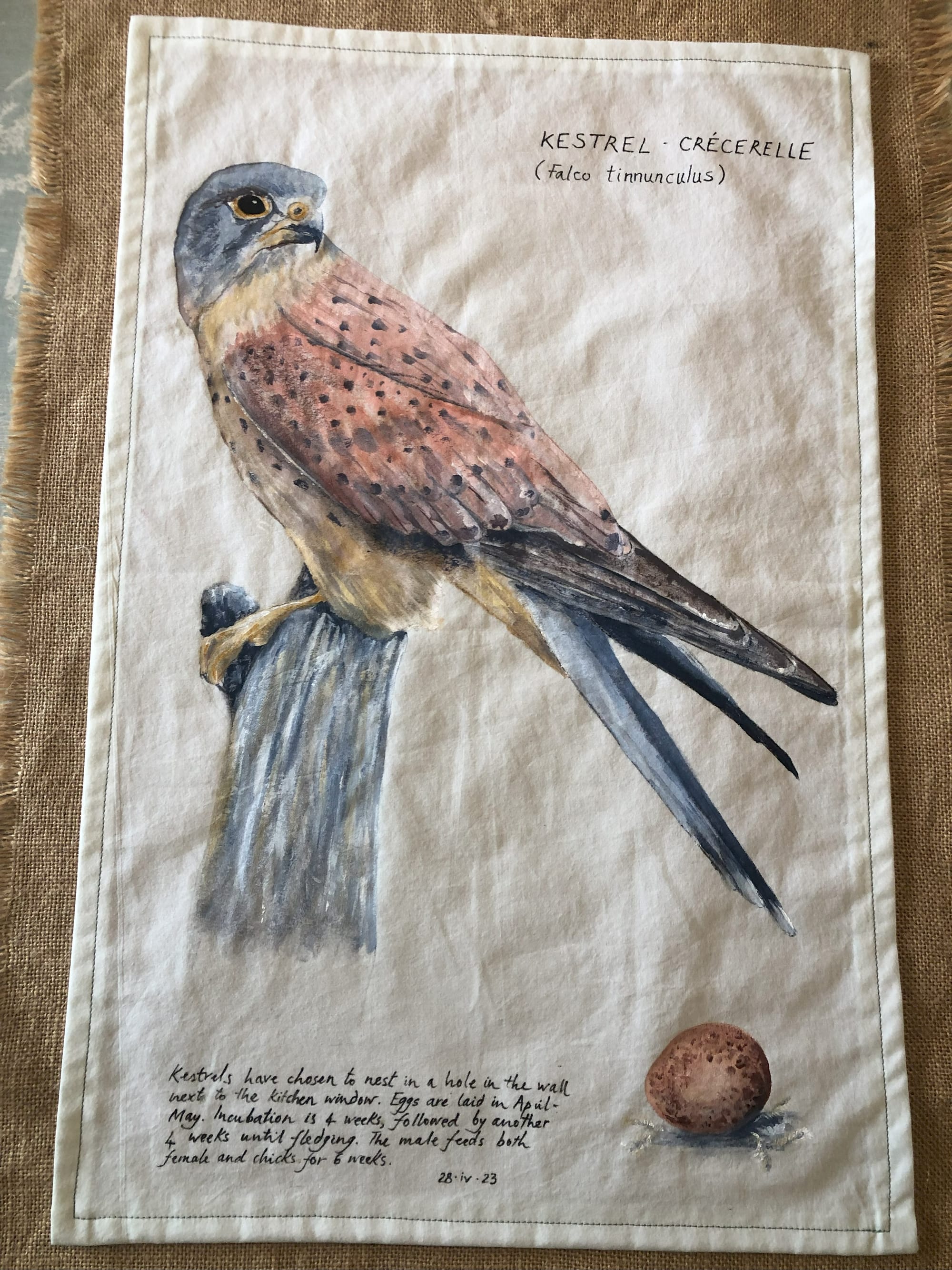
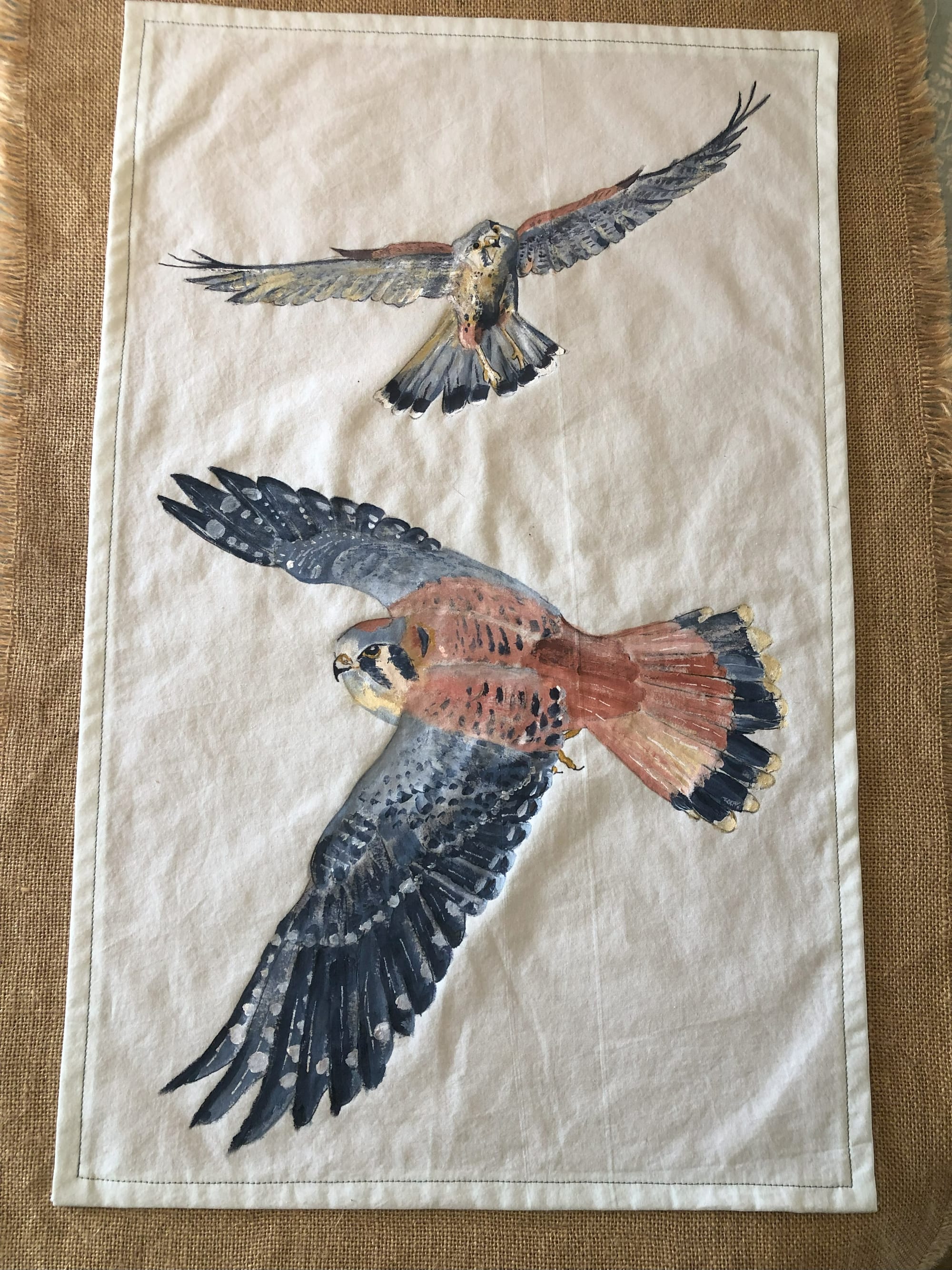
These are in the utility cellar on the new WC wall.
